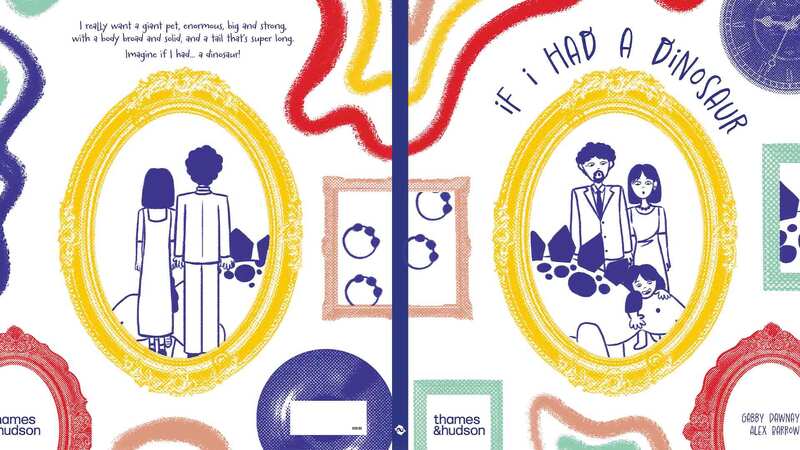You are viewing your 1 free article this month. Login to read more articles.
Understanding fandom
The Sarah J Maas spoilers furore reveals important differences between book readers and digital-native fans.
Sarah J Maas needs no introduction, even for those who read outside the fantasy genre. She is a titan in the field known for her pacy plots, intricate world-building, compelling female protagonists and swoon-worthy romances.
The latest instalment in her Crescent City trilogy, House of Sky and Breath, left die-hard Maas readers reeling when the ending revealed a crossover between her A Court of Thorns and Roses universe and the Crescent City world. The Maas multiverse was confirmed. Now, at the end of this month the long-awaited release of House of Flame and Shadow, the third instalment in the Crescent City series, will be published. Yet, it is only long-awaited by some.
In anticipation of what will likely be a stratospheric publication, Bloomsbury has amped up its social media messaging around the book. In an Instagram post last week, posted in collaboration with Bloomsbury US and Maas, it publicised an excerpt from House of Flame and Shadow. For those who read House of Sky and Breath, the characters mentioned in the passage made perfect sense and teased the sense of peril which perforates Maas’ plots: Bryce, the protagonist of the Crescent City series, racing to save Nesta and Azriel, characters from A Court of Thorns of Roses.
However, those who hadn’t yet finished House of Sky and Breath were livid. The comment section on the post is a battlefield, strewn with anticipation, peppered with heart-eye emojis and, notably, anger and rage directed toward the publisher for spoiling the ending of House of Sky and Breath. For one person it was “most disappointing post I’ve ever come across. I’m halfway through CC2 and I feel as if the entire reading experience was just robbed [from] me”. Another comment leapt to Bloomsbury’s defence: “Some of us have been waiting two years for this book, we want the teasers and marketing!!! If you haven’t read it after two years, that’s on you! Not the publisher or the author!”
It is likely hard for those outside of the Sarah J Maas sphere of influence to fully understand how gutted some of these readers were or how invested the readers are in the series. But these aren’t just readers, they are fans and as dedicated as any Marvel, Star Wars or DC fandom. Typically fandom is associated with film and television, but it is becoming increasingly evident how many readers are craving the same level of immersion in the worlds they read about in a novel as those which have historically occupied fan arenas beyond the screen —comics, Manga and graphic novels.
At the crux of this is the interconnectedness of Maas’ worlds, a multiverse echoing the expansive narratives witnessed in iconic franchises such as Marvel. This intertextuality serves dual purposes, offering fans a reunion with beloved characters while securing a loyal fanbase for the publisher and author. A transmedia storytelling approach is at play here, extending Maas’ franchise across various mediums and narrative forms, including an upcoming television series, colouring books, a strong social media presence, amplified by the clear interconnectedness of her novels. Indeed, Maas announced on 19th January 2024 that House of Flame and Shadow’s publication day will also be marked by a website launch and new Instagram handle.
What differentiates a fan and a reader is investment, a sense of ownership. In part, these fans feel like these worlds are part of their cultural and personal identity
What differentiates a fan and a reader is investment, a sense of ownership. In part, these fans feel like these worlds are part of their cultural and personal identity. The worlds are not simply fictional, but become a part of their lived reality. This dedication, even faith, to the creator is therefore incredibly precious, intimate. Seeing a spoiler before reaching the twist is then, by extension, a form of betrayal. It’s a blurry line between reader and fan, but can be simplified when considering: all Maas fans are readers, but not all of Maas’ readers are fans.
The question of consumption must also be reckoned with. A fan is likely to consume the latest instalment in the franchise, be it a film, book, graphic novel, as soon as it becomes available. They will pre-order the book, buy the special editions and see the film as soon as possible. Spoilers must be avoided at all costs. Yet social media has created a new sense of urgency, ushering in a spoiler-rife space where the modern impulse to review and share opinions consistently means spoilers lurk around every corner.
It’s approaching two years since House of Sky and Breath was first released in hardback, Maas herself has spoken publicly about her multiverse in this time, including in an interview with The Bookseller. The spoilers have been multiplying and thriving for years. So who was Bloomsbury targeting in its post? It was targeting the die-hard Maas fans who read House of Sky and Breath immediately, who collected all the special editions and displayed the fan art. The post was for the fans, yet the response to the extract reveals what can happen when the book trade infiltrates reader and fan space. The extent to which Bloomsbury’s post constituted “spoiler” is debatable, for up-to-date fans it is a part of the building excitement, but for new Maas fans it violated the sacred dictum: "thou shalt not post spoilers". Whether on Goodreads, social media, or in casual conversations, fans generally exercise caution, keeping spoilers discreet or confined to designated spaces. Significantly, sites such as Storygraph even have a function to block out spoilers from reviews.
Looking at House of Flame and Shadow’s upcoming release, we can see Bloomsbury “teasing” its audience with a “juicy” snippet. In the same way that film trailers work, this aims to draw an audience in to purchase the book. From the comments on its Instagram post, it is clear that their strategy worked, sparking renewed conversations and fan speculation. But for an author with a mammoth backing like Maas, is this approach necessary?
The transformative impact of social media on book discourse cannot be overstated. With a mere scroll on TikTok, you can encounter iterations of "if you loved X, you need to pick up Y", and seamlessly transition from digital discovery to acquisition, with the book in hand from Amazon within 24 hours. The journey from screen to shelf has been expedited, the distance between the reader and the book trade lessened. TikTok and Bookstagram, now integral components of many readers’ journeys, contribute significantly to the success of the book trade. A peek at the latest bestsellers illustrates the transformative power of these platforms, cultivating a legion of devoted readers who, time and again, buy novels penned by their favoured authors.
As both publishers and fans inhabit these digital spaces, a dual audience for publishers’ social output has been created. The comment section on Bloomsbury and Maas’ “spoiler”, reveals how book marketing, a vital component of the publishing ecosystem, can permeate the realm of fandom. While this intersection between readers, fans and the trade can be seen to benefit the industry, it brings forward questions about how these parts of the book trade should interact. As publishers navigate these fan spaces, questions emerge: how closely should they adhere to the unwritten rules of fandoms? How can publishers align their approach to satisfy both the industry’s marketing needs and the expectations of fervent readers? The unification of Maas’ fantasy universes presents a challenge for the book trade to forge a seamless connection between publishers, readers and fans within the digital sphere.



















